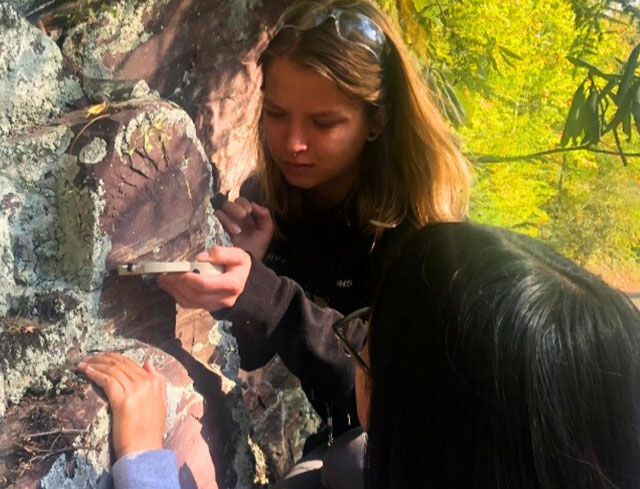Woolly Worm Winter
04 Dec 2020
An all-black woolly worm could mean severe winters…and fun
BY: Ran Shaffner, Author, Heart of the Blue Ridge: Highlands, NC

Since 1978 the world-famous Woolly Worm Festival in Banner Elk has predicted the upcoming winter weather for the North Carolina mountains. Sadly, this year, because of COVID, the October festival was canceled.
I say sadly because the winning worm would have received $1,000 and the honor of predicting this year's winter weather. There would have been craft shows, food, live entertainment and rides. And woolly worm races would have spanned the weekend, with Sunday's winner receiving $500.
The Woolly Worm Festival died this year, but the woolly worm lives on in history and folklore. On August 10th, I saw in the town of Highlands my first woolly worm of the season: all black. According to this black worm, the winter of 2020-21 will be long, cold and snowy.
When severe winters visited Highlands in the past, they resulted not in cancelled festivals but unique vistas and creative fun. The last really cold winter in Highlands was in 1977. The cold was so deep that Bridal Veil Falls crystalized top to bottom. Today we have to manufacture ice to skate on it, but between the mid-forties and early seventies, the ice rinks in Highlands were nature made.
Skating on the lakes and ponds was by far the most fun enjoyed by residents and visitors alike. Steve Potts rented ice skates to all who didn't have their own. One frozen February in 1940, after a deep January snow, Lake Sequoyah froze to a depth of 15 inches. It attracted skaters in unbelievable numbers, considering it was off tourist season. With that depth of freeze, even small cars could be safely driven on the lake.
During the mid-forties, when it didn’t snow on Wednesdays in the winter, the children of the town were permitted to roller skate on Main Street. The east lane between town hall (then in the Masonic Hall) and Bill Holt’s soda shop at 4th and Main was closed off for the afternoon, and children swarmed to enjoy the fun.
By the late fifties, ice skating on Mirror Lake had become so popular that visitors, mostly from South Carolina, came to Highlands in droves. Parking spaces were impossible to find, and bonfires and colored lights strung along the fringes of the frozen surface kept the sport alive well into the night so that restaurants, drug stores and shops reported record sales.
Another favorite pastime when the winters were buried in snow was sledding. Cub Rice and his buddies would climb Satulah Mountain as far as Mrs. Albert Hill's tea house at Sloan's gate. They would slide all the way down to Mill Pond (now Mill Creek) on makeshift sleds. It was much steeper than it is now, and while some used store-bought sleds, more often, the sleds were homemade from the metal rims of old wagon wheels bent to make runners.
In the late seventies, before the 1977 deep freeze, a group of youngsters, including Mike, Jack, and Chuck Crisp and "Red" Potts, would ride out to the Norton farm near Shortoff. They would barrel down the slope of the mountain into the lower pasture on inverted car hoods. A Volkswagen hood held one passenger, a Ford Falcon hood, two, a 1962 Cadillac, up to six, and handmade quilts kept the passengers insulated from the freezing metal. Night runs were popular, lit by a bonfire at the top of the hill, and only occasional injuries occurred, like when Chuck hit Felix Speed’s cow in the pasture and broke its leg.
For a sled, Red Potts would stand on his Ford Falcon hood holding a rope attached to the front. Unable to steer it, he would spin down to the bottom of the hill, where a corner would catch in a drift and catapult him headlong into the snow. Mike vows the incline along one stretch was 80°. The average speed, as they clocked it, was 45 mph.
While ice skating and sledding continued to dominate the winter scenes in Highlands, skiing would become popular when Gene and Susan Head opened Ski Scaly in 1981. Today we're blessed by Art and Angela Williams with Highlands' own skating rink for continued cherished winter memories.
It's rare to find an all-black woolly worm to match the severe winters before 1977, but if there's any truth to what that legendary worm has predicted in the past, this winter, despite the threat of COVID, may bring back all the fun that residents and visitors used to create on the lakes and hillsides of Highlands.













